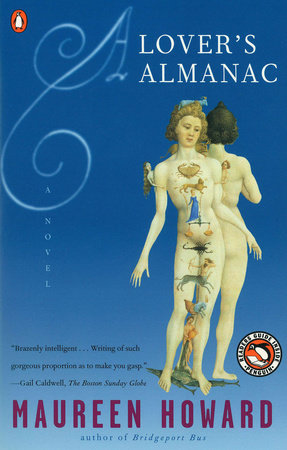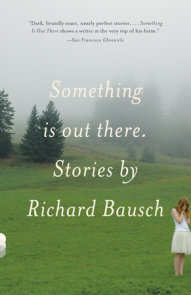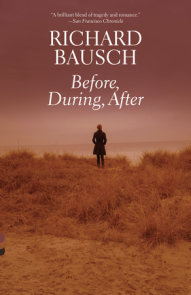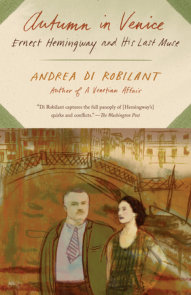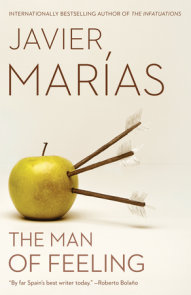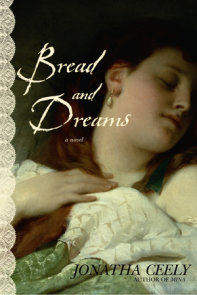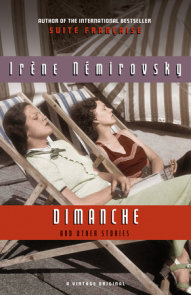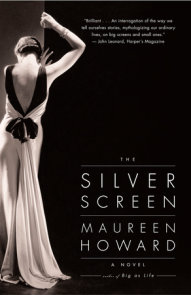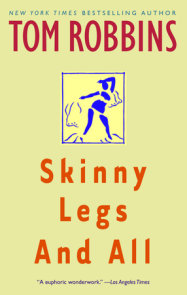READERS GUIDE
Questions and Topics for Discussion
INTRODUCTION
January 1, 2000 (leap year), 224th year of American Independence, in the city and environs of New York.
Louise Moffett teeters in stiletto heels through her confetti-littered loft, lamenting the details of her disastrous millennium bash and the heartbreaking fallout that accompanies her entry into the new century. Across town, her lover, Artie, awakens with a hangover and the cloudy memory of a botched marriage proposal the night before. So begins A Lover’s Almanac, a romantic, thinking-person’s love story about fate — how and why we live the lives we do and fall in love with the people we do.
The lapsed lovers are two thirty-somethings in New York City. Louise, a Midwestern farm girl, is a hot artist. Artie, an orphan raised by his grandfather after the death of his hippie mother, is a hapless computer wizard. As we follow their romance, we draw back to learn about their parents’ and grandparents’ lives, about the events, public and private, that have affected their fates. At intervals, we turn from the characters’ stories to consider the lives of the geniuses who have so profoundly affected our society: Edison, Einstein, Franklin, and other creative thinkers of the past. In this “broad meditation on Western thought” (Los Angeles Times), Howard asks: How do we make our own histories — and how do we connect to history writ large? To what extent do we control our destinies? As we plumb the depths of Maureen Howard’s lush prose to discern the curious, looping narrative strands at the novel’s heart, we find a witty, moving, and brilliantly simple love story. In the grander sense, as we ponder the fate of the characters in light of the novel’s intricate historical backdrop, “a modern version of the great panoramas of the past” (The New York Times Book Review) is revealed, one that braids love, memory, and fate into a rich tapestry encompassing all our histories.
ABOUT MAUREEN HOWARD
Maureen Howard is the author of seven novels, including Grace Abounding, Expensive Habits, and Natural History, all of which were nominated for the PEN/Faulkner Award. She has taught at a number of American universities, including Columbia, Princeton, Amherst, and Yale, and was recently awarded the Academy Award in Literature by the American Academy of Arts and Letters. She lives in New York City.
A CONVERSATION WITH MAUREEN HOWARD
Part of the unique beauty of A Lover’s Almanac is the fascinating detail that you use — like entries in an almanac — throughout the novel. What is your own conception of the significance of the almanac as cultural and historical repository, and what did you hope to achieve by shaping your novel in the almanac’s image?
The almanac is a lively elastic form which combines both fact and fiction. I believe I call it, not irreverently, a bible for our days. On the one hand, its astronomy gives us the movements of the planets with great accuracy; on the other hand, it charts our fabulous stories in astrology.Though the novel makes mention of many ancient almanacs — Egyptian, Indian — it is the entertaining book of the American people, Ben Franklin’s and the old Farmer’s Almanac, that appealed to me as a perfect system to display the little stories by which we mark our days along with the almost operatic accomplishments of technology and the never ending tragedies of our society as we come to the end of this era.My gathering of facts with fiction in this playful form, the almanac, is a gesture against chaos. Call it a survival manual.
An important aspect of Cyril’s character is his love of history — an idea that reverberates throughout the novel through your use of historical detail. Was this primarily a plot device, or a reflection of your own personal passion for history?
Cyril O’Connor’s love of history strikes a thematic chord that I hope resonates throughout the novel. Cyril, the old lover in the story, had wanted to be a historian when he was young, but lost track of that dream in the getting and spending of life. He had wanted to understand the Founding Fathers and the vast story of events that formed the time and place he was born into. When he attempts to go back to American history, he’s beyond making sense of it. My young lovers, Lou and Artie, have no sense of history at the start of their troubles. They treat the fifties, in which they enact their millennial party, as though it is a movie set, getting “the look” of it right and the spirit of that time all wrong. But yes, I am fairly passionate about the use of history in my work, about all the discoveries that might tell us who we are.
Your novel is, at heart, a love story. But it’s also been called “a tribute to progress” (Miami Herald), and “an exuberant look at where we have been and where we may be going when the present millennium is over” (San Francisco Chronicle). Can you comment on your intentions when you first sat down to write? Was this the love story you’ve always wanted to tell, or, rather, your way of conveying larger ideas about history and fate?
The love story was absolutely essential from the start. I went back to that harsh late comedy of Shakespeare’s, A Winter’s Tale, which has both old and young lovers, and ends with a bittersweet reconciliation. That glorious work was only a touchstone, for I’ve bent the Bard’s lovers quite out of shape, though Cyril and Sylvie — my golden oldies — have lived middling fair lives without each other for fifty years. And my young lovers — urban, savvy, cynical — are children still who have not tested the depths of love as the novel opens. Larger ideas? The idea seems to me so simple: that these characters’ lives are to a great part shaped by the culture they live in, live through. Still, they must find their way.
The timing of the novel has a narrative significance, and also serves to emphasize certain themes and motifs. What inspired you to place the story at the turn of the millennium?
We started some years ago to plan the celebration, congratulating ourselves on making it to that spectacular date. Science and its servant, technology, can predict the placement of the stars, the full moon, even the tides, but we will be imprecise, even bewildered, about where we are headed. As Artie and Lou predict, the media will be all over the millennium. They fear that the virtual world, the glut of images, will distort the experience of the millennium, yet they distort it with their party. Finally, in A Lover’s Almanac, both the old and the young must take stock of who they are.
A Lover’s Almanac has much to say about individual choice. Historically, the almanac itself was used to predict future events, yet many of your characters seem to be at their best when taking it upon themselves to decide their fates. What are you thoughts on this fundamental question?
The question is too weighty. I write fiction, not the blustery self-help books of the successful writer in my almanac. Like Louise, who, as a kid, uses astrology to take swipes at her family, I disbelieve in predictions which limit us, rob us of choice. We may be creatures of our time and place, but we make choices, not always for the best, when we love and work. Sylvie, Cyril’s old love, boldly rings his doorbell so that their romance may begin again; and Louise, in her Progress of Love, shows literally that in the end she understands the impact of the past on present lives, of the public world on the personal. She makes her art in the midst of her audience. As we make our lives? I suppose. And as I made my almanac “to summon aptly,” as Robert Frost says of his work, “from the vast chaos of all I have lived through.”
A Lover’s Almanac is the first in a series of novels that you plan to write, each taking place during a separate season of the year. What themes do you see as unique to the Winter installment, and can you comment on your vision of what will unite the cycle?
Yes, I’m writing the seasons, writing Spring to be exact, the season of rebirth, picking up from birth at the end of A Lover’s Almanac. Spring will be three tales that continue the themes of inheritance, of what we must recall to live with some honesty in the present. I’m interested in what stories we choose to tell, when we choose to tell them, and what dreams and memories we keep to ourselves. The natural world of the seasons is a grid, like the almanac, in which we live our days. Richer, grander in imagery than any novel, the seasons present us with their comforting and perilous stories. I hope to tap a few in my small way. Like Louise, I live on the dangerous edge between belief and disbelief in my project.
DISCUSSION QUESTIONS
RELATED TITLES
Bridgeport Bus
ISBN 0-14-005566-5
The luminous, funny story of a woman’s midlife rebellion and self-discovery.
The Facts of Life
ISBN 0-14-005500-2
Howard’s brilliant, award-winning memoir. (July 1999)







